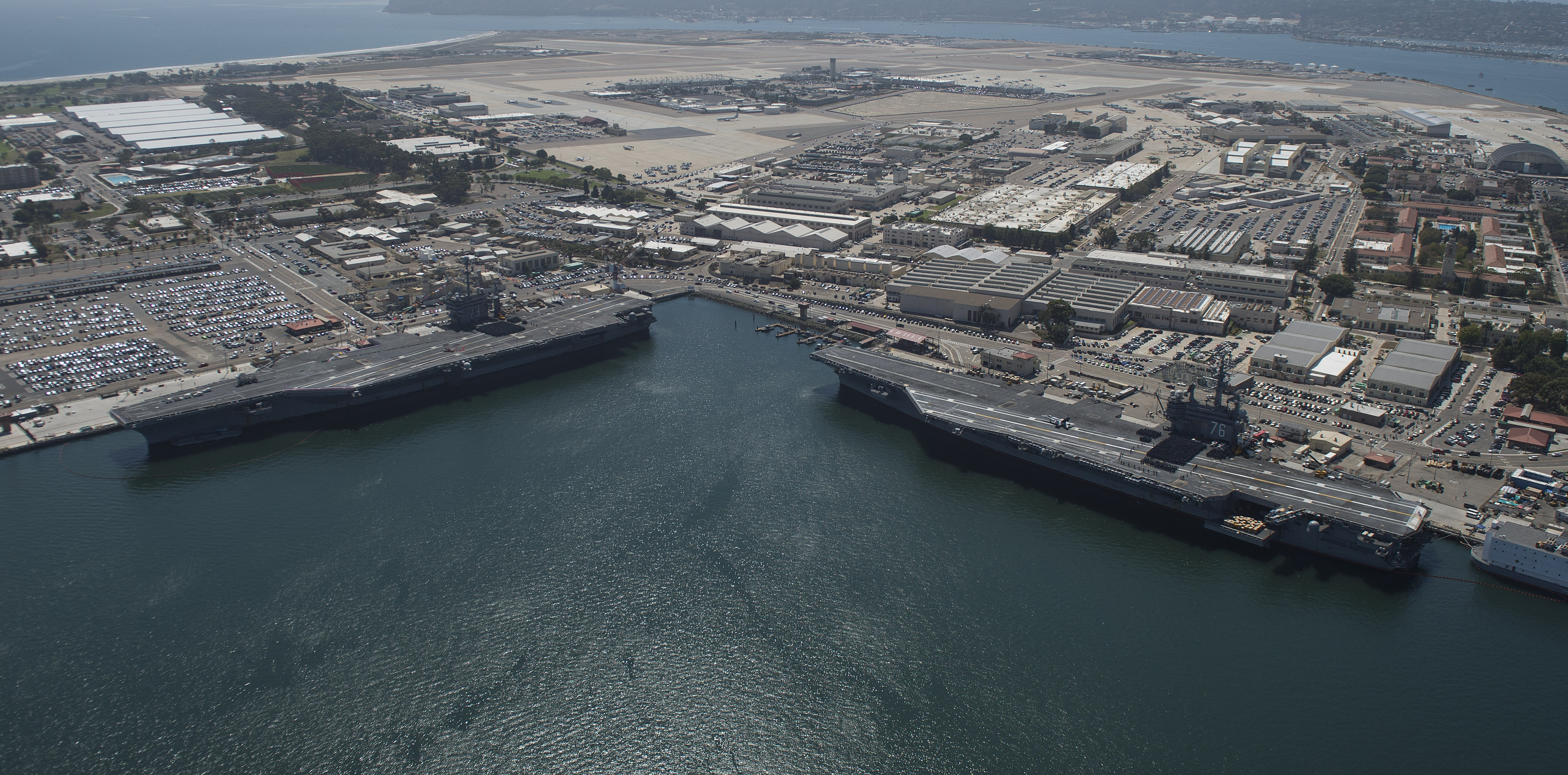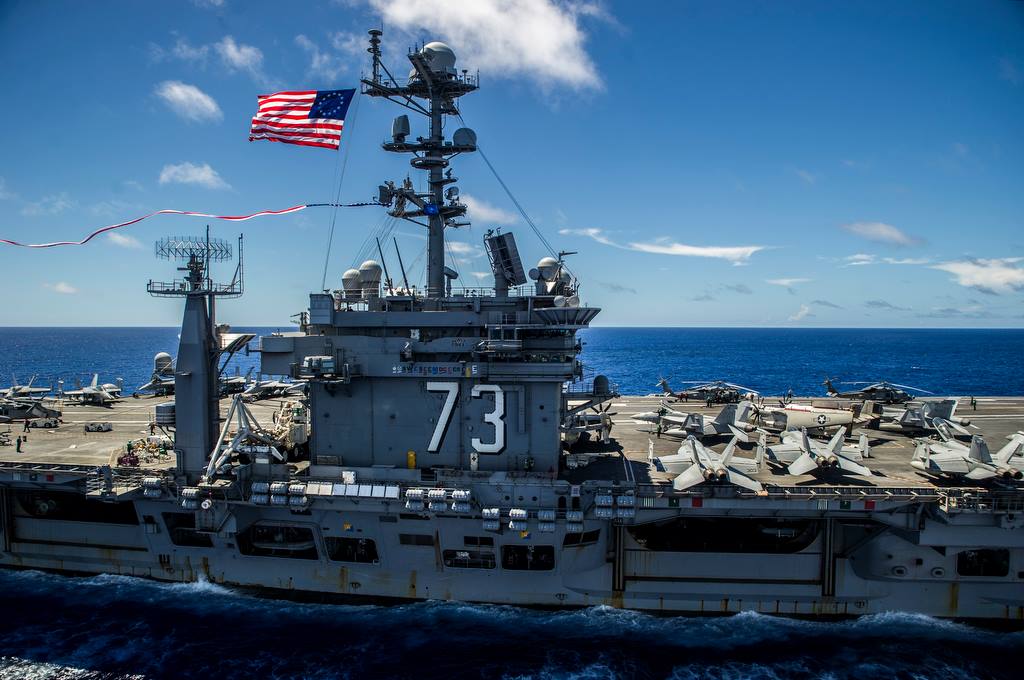
SAN DIEGO – Fresh with minor repairs that delayed its planned departure by four days, the aircraft carrier USS George Washington (CVN-73) pulled away from North Island Naval Air Station in Coronado, Calif., for a notable deployment.
Navy officials haven’t specified what mechanical issues held up the ship and what last-minute repair work was done while still pierside at North Island.
“We have all the resources here to tackle it quickly,” Capt. Timothy Kuehhas, Washington’s‘s skipper, told reporters in televised reports before boarding the ship for the departure.
“We are definitely ready to get underway today,” added Rear Adm. Lisa Franchetti, who commands Carrier Strike Group 9 aboard Washington.
The carrier, which arrived in California on Aug. 10 from its prior homeport in Yokosuka, Japan, will travel south, circumvent the tip of South America and head north to Norfolk, Va., for a scheduled mid-life refueling and complex overhaul (RCOH).
“The George Washington Carrier Strike Group’s deployment around South America provides a valuable opportunity to train and operate with several key partner nations in the region, enhancing cooperation, mutual understanding, and interoperability between our forces,” Franchetti said in a statement. “This deployment also gives our Sailors a chance to better understand the region and our shared interests and values.”
“Our journey around South America is one that few aircraft carriers get to experience, and we are eager to work with our partner nations,” Kuehhas said in the statement.
The carrier is deploying with Destroyer Squadron 23, Carrier Air Wing 2 and guided-missile destroyers USS Chafee (DDG-90) and USS McFaul (DDG-74). They will participate in the U.S. Southern Command exercise Southern Seas.
Carrier Air Wing 2 includes the “Bounty Hunters” of Strike Fighter Squadron (VFA) 2, the “Kestrels” of VFA-137, the “Golden Dragons” of VFA-192, the “Blue Blasters” of VFA-34, the “Black Eagles” of Carrier Airborne Early Warning Squadron (VAW) 113, the “Gauntlets” of Electronic Attack Squadron (VAQ) 136, the “Black Knights” of Helicopter Sea Combat Squadron 4, the “Blue Hawks” of Helicopter Sea Maritime Strike Squadron 78, and “Providers” of Fleet Logistic Support Squadron 30.

George Washington is part of a historic three-carrier “hull swap” as the Navy shifts its flattops to accommodate the GW‘s critical nuclear refueling and overhaul in Newport News, maintain CVN capability in Japan with the arrival of USS Ronald Reagan (CVN-76) already en route to Yokosuka, and sustain carrier support on the West Coast when USS Theodore Roosevelt (CVN-71) makes San Diego its new homeport.
For the swap, Washington is largely staffed by Reagan crew members after a mid-August “crew swap,” enabling two-thirds of the Yokosuka-based crew to crossover to the Reagan and remain in Japan as part of the forward-deployed naval force with the Reagan, according to the Navy. Once in Virginia, the San Diego-based sailors will be flown back to California, where they will join TR at the end of its around-the-world deployment once it arrives at North Island. TR and its carrier strike group are currently deployed in the Persian Gulf region.
Washington, which has been forward-deployed in Japan since 2008 with U.S. 7th Fleet, will get some major upgrades and fixes to systems and equipment during its RCOH, the Navy said.
Delays in ship departures, often for mechanical problems, aren’t unusual. In March, Roosevelt, which completed its RCOH last year, was stuck in Norfolk for two extra days after seawater clogged intakes.





